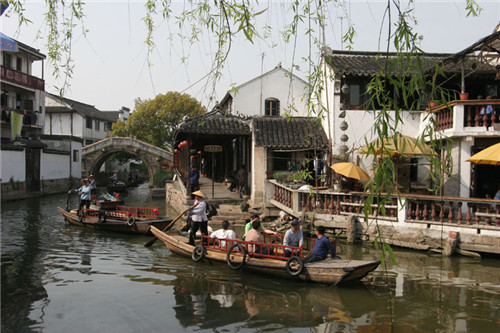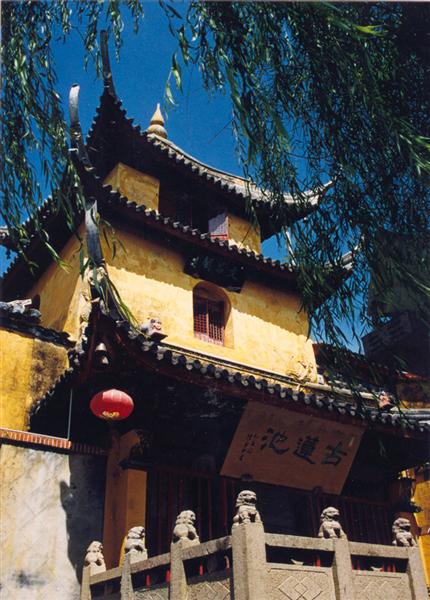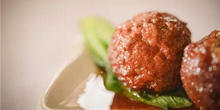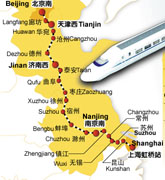The Old Town of Jinxi
(chinadaily.com.cn)
Updated: 2013-07-10


The ancient town of Jinxi (which means Brocade Brook) is situated to the south of Kunshan city in Jiangsu province, and boasts an advantageous geographic location as it lies 50 km to the east of Shanghai and 35 km to the west of Suzhou, and with convenient access to main motorways which link it to Shanghai Hongqiao Airport.
Jinxi covers 90.69 square kilometers of cultivated land a with rich natural water resources. The mild and humid North Subtropical Monsoon climate means that it enjoys adequate light, rainfall and four distinct seasons. The annual average temperature is 16.4 degrees (with a high of 37.1 degrees and a lowest recorded temperature of -4.5 degrees).
Jinxi has many places of historic interest and scenic views due to its rich historical and cultural heritage. The improved infrastructure has led to a surge tourism to Jinxi, which hopes to continue its development and play a role in the world economy by attracting more overseas visitors and investors.
Jinxi, known as a water town, fascinated the imperial family and aristocracy in the Song Dynasty (960-1279), and poets in the Ming Dynasty (1836-1644) extolled the "Eight Sceneries" of the town which are apparent even today when one takes a walk around the old bridges, lakes, quiet lanes, temples and gardens. The most famous attractions are: Jinxi Lotus Corridor, Wenchang Cabinet, Lotus Pool Temple, Gold Dragon Garden, Water Tomb of Royal Concubine Chen and the Ancient Tile and Brick Museum.
The history of Jinxi goes back to the Neolithic age, and much later, in the Spring and Autum period (770-476 BC), the King of Wu assigned Lord Wu Zixu the task of building a town. During the Han dynasty (206 BC-AD 220 ), a famous general, Ma Yuan, trained his troops in the area and, during the Three Kingdoms period, Prime Minister Zhang Zhao was buried in Jinxi. The famous painter Gu Kaizhi of the East Jin Dynasty (AD 317-420), fled to the town to avoid political oppression. During the Southern Song Dynasty (1127-1279), Emperor Xiaozong and his concubine Chen fled to Jinxi to evade enemy attack, and the concubine was enchanted with the town. When she died during their stay, the emperor permitted her burial in Jinxi, which he renamed Chenmu (Chen Tomb), and it was not until 1993 that it became once again known as Jinxi.
The local Party committee and the government have established museums highlighting the town's cultural and historic heritage, and it is known as "China's town of folk museums". For instance: The Root Carving Museum and Wonder Stone Museum, Chinese Ancient Bricks and Tiles Museum, the Antiques Museum of East China, the Red Porcelain Museum, Zhangsheng Art Gallery and the Old Coins Museum.
In addition, the Persimmon Garden is home to an art gallery that also exhibits calligraphy, and Lotus Pool Temple and Wenchang Pavilion - a well preserved historical site – are also highlights.
Five lakes surround Jinxi, and over 30 ancient bridges cross the town's waterways.
Rating: AAAA
Add: Wenchang road, Jinxi town, Kunshan
Tel: 800-8282855
Website: www.chinajinxi.com.cn
News
Four special holiday dishes to try in Kunshan
Like Christmas Day in the West, it is traditional in China to cook up an enormous feast on Chinese New Year, with dinner tables groaning under the weight of dozens of dishes.


